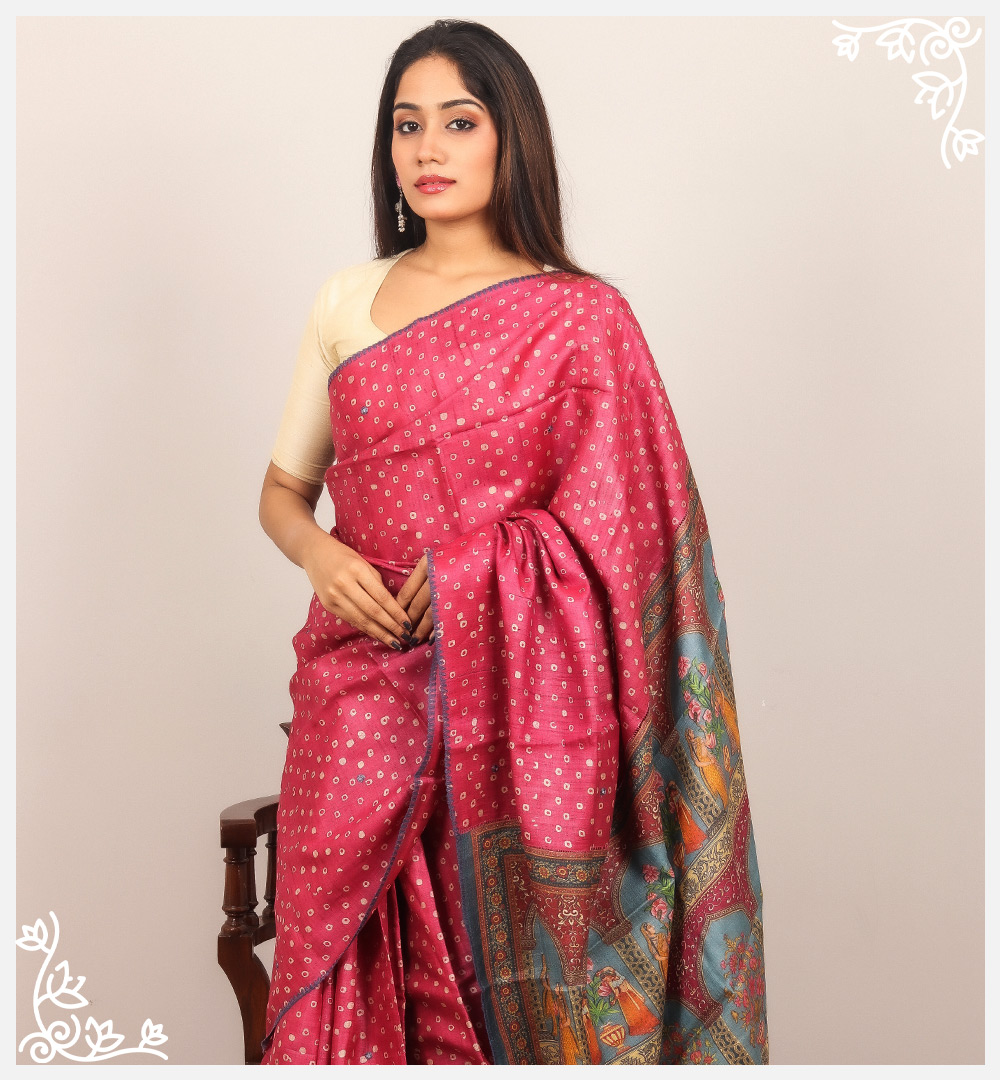The Bandhan of Silks: A Bandhani Silk Feature
Did you know that Bandhani is the world’s oldest tie and dye technique applied to cloth and textiles? Historians and researchers date its origins to about 5000 years ago. The word ‘Bandhni’ is derived from the Sanskrit verbal root word “bandh” which means to bind or to tie. A minuscule area of the cloth is plucked or pinched with the thumb and index finger and a thread is tied around it; this process is repeated all through the yardage of the cloth and then it is put through the resist dyeing process. The final result is an intricate pattern of dots in the base colour and the other areas in the dye colour, resembling a beautiful star-speckled sky. A Bandhej saree is a woman’s prized possession and a legacy she can pass on through generations.
The Gujarati and Rajasthani Magnificence
The Khatri community of Gujarat was the pioneer in rolling out this wonderful weave and technique in the Indian subcontinent. Gradually the craft spread far and wide, to many towns like Jamnagar, Jaipur, Udaipur, Sikar, and Ajmer, absorbing the new local flavours and lending itself to new patterns. A Bandhani saree is nothing short of art in the form of fabric; such is its beauty and intricacy of design. It has stood its ground for nearly 5000 years and is still shining in its glory. There is a mention of Bandhani in Bana Bhatta’s Harsha Charita and the Buddhist paintings of Ajanta also stand testimony to the existence of Bandhani in those times. Top-notch saree designers of today showcase the rich heritage of Bandhani in their latest collections in this period and time too; such is its timeless appeal.
Prints and Colours That Etch Into Memory
The Bandhani, like many other Indian vintage textile crafts, uses natural motifs like flavours, creepers, bells, and Jalas (web) for its designs. Single-knotted designs are called Ekdali; three-knotted and four-knotted designs go by the name of Trikunti and Chaubandi respectively; Haathi (Elephant), Pachek (geometric), Putali (doll) are also some timeless designs that are seen in the fashion circuits even today. Bandhani Saree comes in a wide cornucopia of colours - magnetic magentas, turmeric yellows, peacock blues, emerald greens, ruby reds, amethyst purples, and pearly whites; and sarees in these hearty jewel tones certainly make heads turn in wondrous admiration.
Styling Tips and Bridal Gharchola
The regal silk Bandhanis of Gujarat, the ornate silk Bandhej of Rajasthan, and the Chungudi which is Tamil Nadu’s equivalent of Bandhani, are all woven with a great eye for detail and precision into stunning, splendid sarees, that can be worn for any occasion. Paired with heavy gold jewellery, we have a wedding look; with simple accessories and a plain blouse, we can create a formal office wear look. Interestingly the deep ochres, trendy tangerines, and flashy neon-coloured Bandhani sarees hardly need any accessories; the colours are so aesthetically pleasing by themselves that the saree looks so grand and resplendent.
Usage in Modern Indian Fashion and Concision
Even over aeons of its existence, the Bandhani saree has retained its shine, sheen, and uniqueness. A woman draped in a Bandhej saree presents a picture of timeless, ageless elegance. And when you own a Bandhani saree, you own a slice of history and antiquity. So reserve a spot for a spectacular Bandhani saree in your wardrobe from Tulsi Madras and soak yourself in the vibrant aura of Indian heritage.



